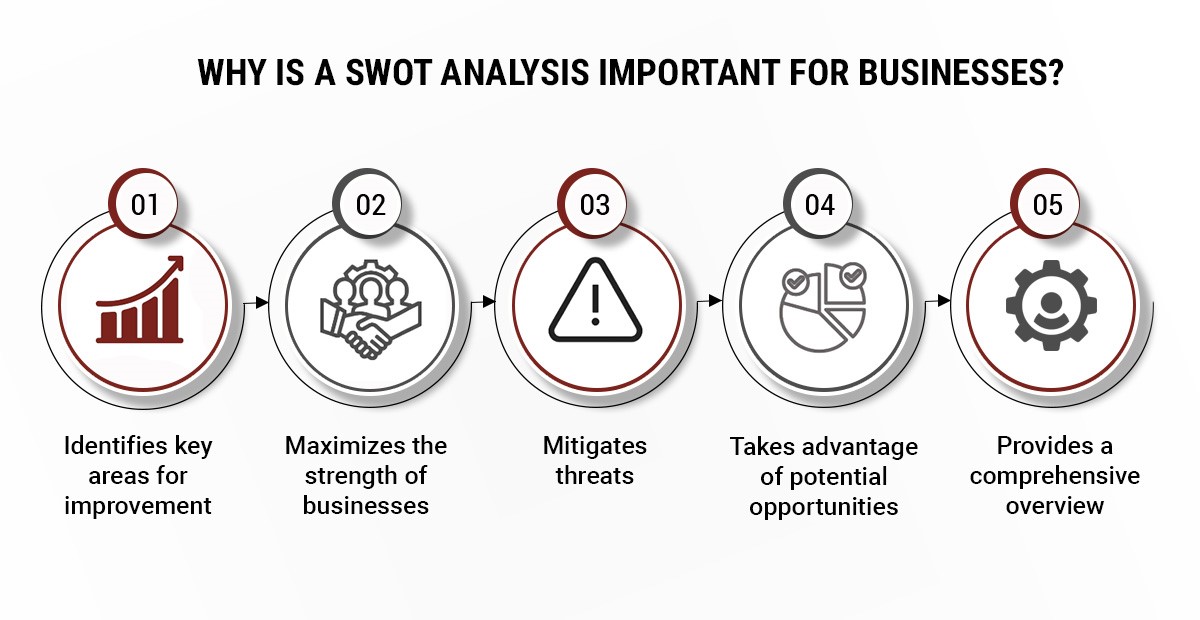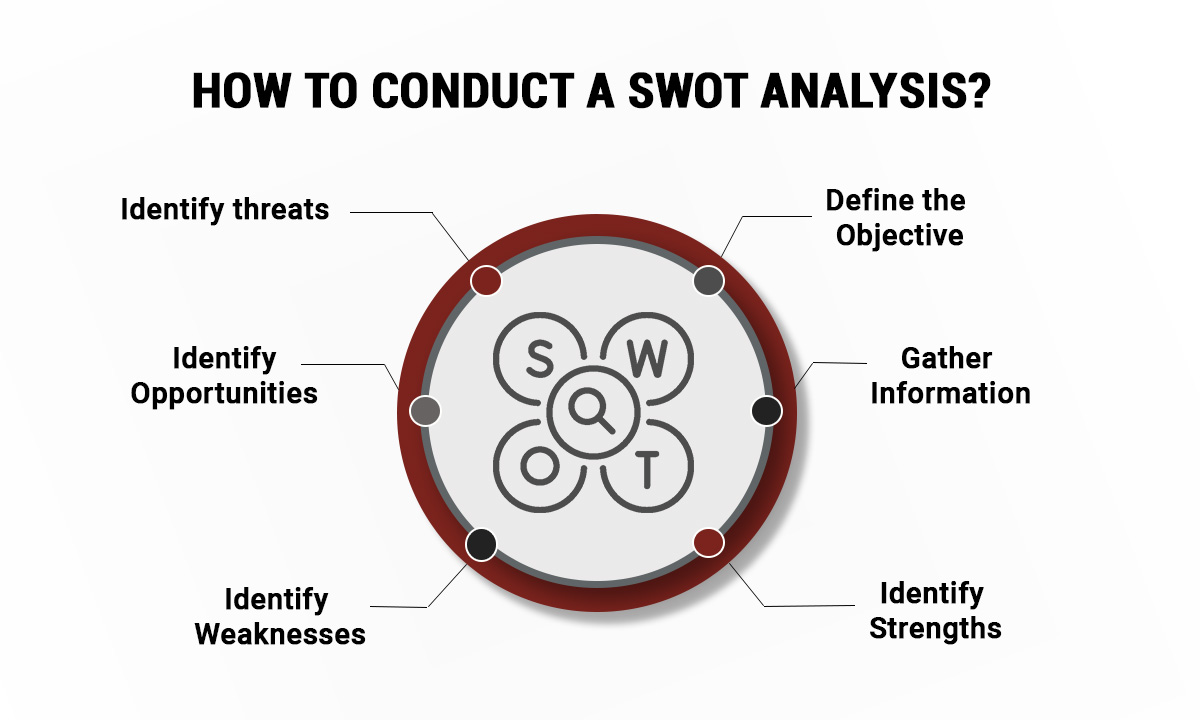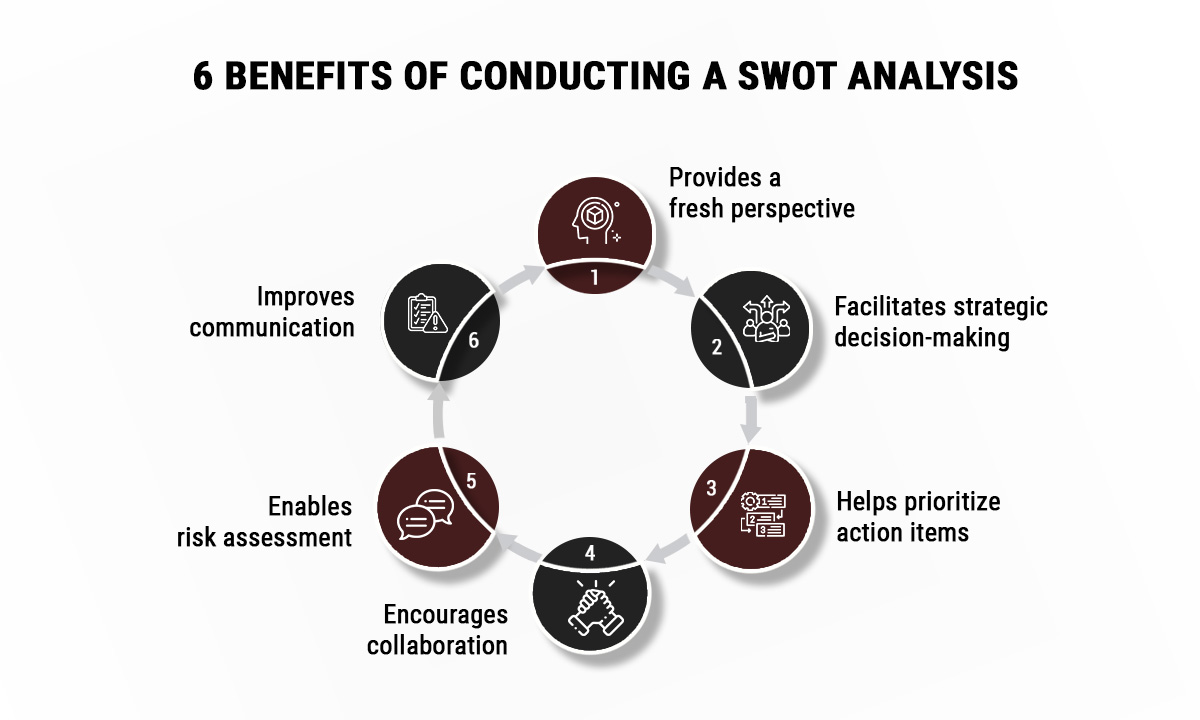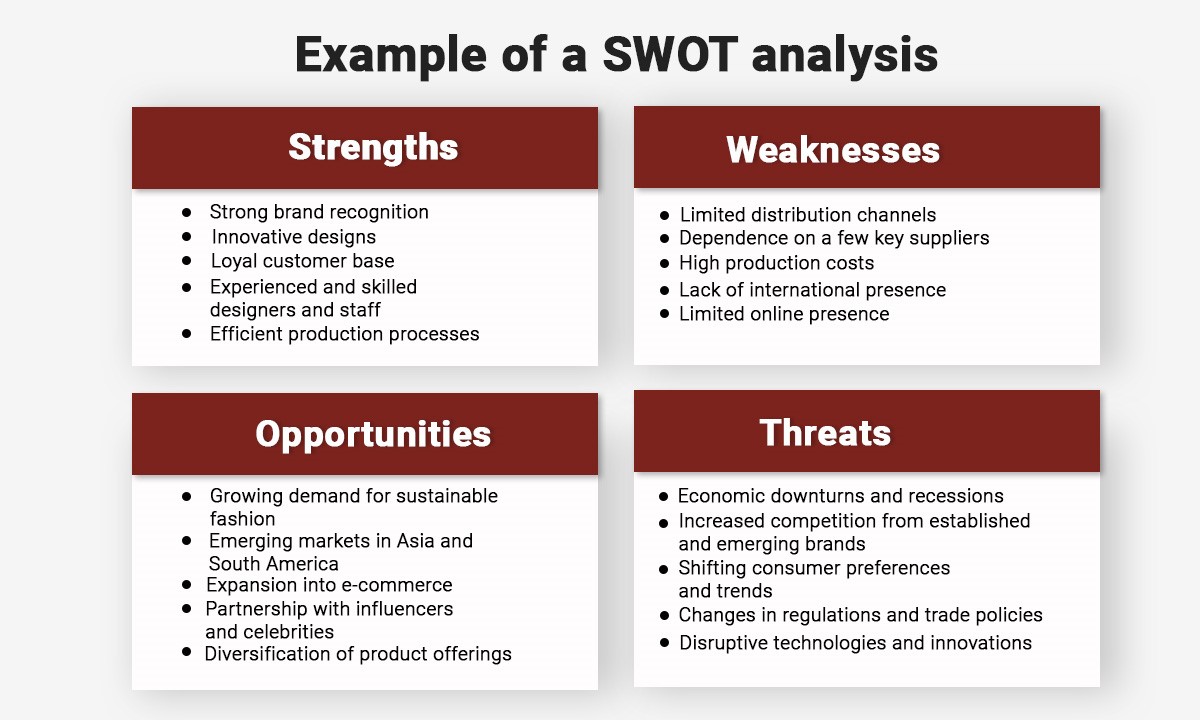Every business, big or small needs a solid plan to succeed. A well-constructed business plan takes into account the strengths and weaknesses of a company and the opportunities and threats present in the marketplace. One of the most useful tools for assessing these factors is the SWOT analysis as it provides a comprehensive overview of a company's current situation and potential for growth. In this article, we will discuss what a SWOT analysis is, why it is important for businesses, who should conduct it, and how to conduct it effectively.
Have you ever wondered how businesses manage to evaluate all the internal and external factors that could affect their success? Welcome to the SWOT analysis. It's a strategic planning tool that helps businesses identify their Strengths, Weaknesses, Opportunities, and Threats.
Strengths refer to internal factors that give a company an edge over its competitors. Think of a strong brand, loyal customer base, experienced employees, or efficient operations. Weaknesses, on the other hand, are internal factors that put a company at a disadvantage. These could be a weak brand, lack of funding, inexperienced employees, or outdated technology.
But what about external factors that could impact a business's success? That's where Opportunities and Threats come in. Opportunities are external factors that could help a company grow and succeed. This could include a growing market, new trends, technological advancements, or changes in regulations. Threats, on the other hand, are external factors that could harm a company's growth and success. Examples of threats could be economic downturns, increased competition, changes in consumer behavior, or natural disasters.
By conducting a SWOT analysis, businesses can make informed decisions about their strategic initiatives. By focusing their resources on areas with the greatest potential for growth and competitive advantage, businesses can increase their profitability, market share, and long-term success. So, whether you're a business strategist, executive, manager, or consultant, SWOT analysis can provide a fresh perspective on your company's current situation and potential for growth.
A SWOT analysis is essential for developing a business plan that maximizes a company's strengths, minimizes its weaknesses, and takes advantage of opportunities while mitigating threats.
Here are some of the reasons why a SWOT analysis is important for businesses:

Now that we know what a SWOT analysis is and why it is important for businesses, let's discuss how to conduct a SWOT analysis effectively. Here are the steps involved:

Once the SWOT analysis is complete, the next step is to use the information to develop a strategic plan that maximizes the strengths of the business, minimizes its weaknesses, takes advantage of opportunities, and mitigates threats.
A SWOT analysis can be conducted by anyone involved in the strategic planning process of a business. This can include business strategists, executives, managers, and consultants. Here are some of the benefits of conducting a SWOT analysis:

This information helps businesses to prioritize their key strategic initiatives, focus their resources on areas with the greatest potential for growth and competitive advantage, and develop a strategic plan that aligns with their goals and objectives. Ultimately, a SWOT analysis helps businesses to make more effective strategic decisions that can lead to increased profitability, market share, and long-term success.
To help illustrate the SWOT analysis process, let's take a look at an example of a SWOT analysis for a company in the fashion industry:

Using this SWOT analysis, the company could focus on expanding its distribution channels and international presence, reducing production costs, and investing in sustainable and diverse product offerings.
Q: Is a SWOT analysis only for large businesses?
A: No, a SWOT analysis is beneficial for businesses of all sizes, including small businesses.
Q: Can a SWOT analysis be conducted for a specific project or product?
A: Yes, a SWOT analysis can be conducted for a specific project or product to evaluate its strengths, weaknesses, opportunities, and threats.
Q: How often should a SWOT analysis be conducted?
A: It is recommended to conduct a SWOT analysis at least once a year or whenever there are significant changes in the industry, competition, or business environment.
Q: What should I do with the information gathered from a SWOT analysis?
A: The information gathered from a SWOT analysis should be used to develop a strategic plan that maximizes strengths, minimizes weaknesses, takes advantage of opportunities, and mitigates threats.
In conclusion, a SWOT analysis is an important tool that can help businesses of all sizes and industries to identify their strengths, weaknesses, opportunities, and threats. By conducting a SWOT analysis, businesses can gain a better understanding of their current situation and potential growth opportunities, enabling them to make informed business decisions and develop effective business strategies. As a strategic leader or business strategist, it is important to conduct a SWOT analysis regularly to stay up-to-date with changes in the industry and competition, and ensure that your business plan is relevant and effective in achieving your business goals.

CredBadge™ is a proprietary, secure, digital badging platform that provides for seamless authentication and verification of credentials across digital media worldwide.
CredBadge™ powered credentials ensure that professionals can showcase and verify their qualifications and credentials across all digital platforms, and at any time, across the planet.

Keep yourself informed on the latest updates and information about business strategy by subscribing to our newsletter.